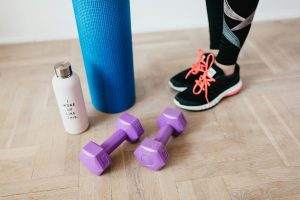The Best Home Workout Equipment
In recent years, the trend of home fitness has gained immense popularity. With busy lifestyles and the high cost of gym memberships, more people are opting for home workout equipment to stay fit. This article will delve into the best home workout equipment available, providing a comprehensive analysis of various options and their benefits. Additionally, we will compare these options to help you make an informed decision.

-
Introduction to Home Workout Equipment
The rise of home fitness can be attributed to several factors, including convenience, cost-effectiveness, and the ability to tailor workouts to individual preferences. Home workout equipment ranges from basic tools to high-tech machines designed to provide a full-body workout. Choosing the right equipment depends on your fitness goals, available space, and budget.
-
Types of Home Workout Equipment
2.1 Free Weights
Free weights, including dumbbells and kettlebells, are fundamental tools in strength training. They are versatile and can be used for a variety of exercises that target different muscle groups.
Advantages:
- Versatility: Suitable for numerous exercises.
- Compact Size: Takes up minimal space.
- Cost-Effective: Generally less expensive than machines.
Disadvantages:
- Learning Curve: Requires proper technique to avoid injury.
- Progress Tracking: May require multiple sets for progressive overload.
2.2 Resistance Bands
Resistance bands are elastic bands used to provide resistance during exercises. They come in various resistance levels and can be used to work out the entire body.
Advantages:
- Portability: Easy to carry and store.
- Affordability: Inexpensive compared to other equipment.
- Variety: Useful for a range of exercises, including rehabilitation.
Disadvantages:
- Durability: Can wear out over time.
- Resistance Limitation: May not offer enough resistance for advanced users.
2.3 Cardio Machines
Cardio machines such as treadmills, stationary bikes, and ellipticals are designed to provide cardiovascular exercise. They are ideal for improving cardiovascular health and burning calories.
Advantages:
- Cardiovascular Benefits: Enhances heart and lung function.
- Convenience: Allows for indoor exercise regardless of weather.
- Variety: Multiple options for different cardio workouts.
Disadvantages:
- Space Requirements: Typically requires more room.
- Cost: Generally more expensive than other types of equipment.
- Maintenance: May require regular upkeep.
2.4 Bodyweight Equipment
Bodyweight equipment includes items like pull-up bars, gymnastic rings, and stability balls. These tools are designed to leverage your body weight for resistance training.
Advantages:
- Minimal Equipment: Often requires little to no equipment.
- Functional Training: Enhances functional strength and flexibility.
- Space Efficiency: Usually compact and easy to store.
Disadvantages:
- Limited Resistance: May not be sufficient for advanced strength training.
- Skill Required: Some exercises may require a higher skill level.
2.5 Multifunctional Machines
Multifunctional machines combine various exercises into one piece of equipment, such as home gyms with integrated weight stacks, cable systems, and benches.
Advantages:
- Comprehensive Workouts: Allows for a full-body workout with one machine.
- Space-Saving: Reduces the need for multiple pieces of equipment.
- Adjustability: Often adjustable for various exercises and resistance levels.
Disadvantages:
- Cost: Usually more expensive.
- Size: Requires significant space.
- Complexity: May have a learning curve and require maintenance.
-
Comparative Analysis of Home Workout Equipment
To help you compare the different types of home workout equipment, we have created two tables: one for a general analysis of features and another for a cost comparison.
3.1 Analysis Table
| Equipment Type | Advantages | Disadvantages | Best For |
| Free Weights | Versatile, compact, cost-effective | Requires technique, multiple sets needed | Strength training, flexibility |
| Resistance Bands | Portable, affordable, variety of exercises | Durability issues, resistance limitations | Rehabilitation, general fitness |
| Cardio Machines | Cardiovascular benefits, indoor use, variety | Requires space, costly, maintenance | Cardiovascular fitness, weight loss |
| Bodyweight Equipment | Minimal equipment, functional training, space-efficient | Limited resistance, higher skill required | Functional strength, flexibility |
| Multifunctional Machines | Comprehensive workouts, space-saving, adjustable | Expensive, large, complex | Full-body workouts, strength training |
Image by Pexels.com
3.2 Cost Comparison Table
| Equipment Type | Average Cost Range | Example Models |
| Free Weights | $20 – $200 | Bowflex Dumbbells, CAP Barbell Kettlebells |
| Resistance Bands | $10 – $50 | Fit Simplify Bands, WOD Nation Bands |
| Cardio Machines | $300 – $2,000 | NordicTrack Treadmills, Peloton Bikes |
| Bodyweight Equipment | $15 – $200 | Pull-Up Bar, Stability Ball, Gymnastic Rings |
| Multifunctional Machines | $500 – $3,000 | Bowflex Home Gym, Total Gym XLS |
4. Choosing the Right Equipment for Your Fitness Goals
Selecting the right home workout equipment involves aligning your fitness goals with the equipment’s features. For those focused on building strength and muscle, free weights and multifunctional machines are invaluable. Free weights offer the ability to perform compound movements and adjust resistance easily, while multifunctional machines provide a diverse range of exercises within one setup, catering to different muscle groups. On the other hand, if cardiovascular health and endurance are your primary goals, investing in a high-quality cardio machine like a treadmill or stationary bike can be beneficial. These machines allow for consistent cardiovascular training, which is crucial for heart health and overall stamina.
For individuals who prefer a mix of convenience and variety, resistance bands and bodyweight equipment can be highly effective. Resistance bands are particularly useful for their portability and can easily be incorporated into a variety of exercises to target different muscle groups. Bodyweight equipment, such as pull-up bars and stability balls, provides a functional approach to strength training without requiring extensive space. These tools are ideal for those who prefer bodyweight exercises or are limited by space but still want a challenging workout routine.
5. The Impact of Technology on Home Workout Equipment
In recent years, technological advancements have significantly impacted the design and functionality of home workout equipment. Many modern cardio machines now come equipped with interactive screens, virtual workout programs, and connectivity to fitness apps, enhancing the overall exercise experience. These features not only provide motivation but also allow users to track their progress and tailor workouts to their specific needs. For example, smart treadmills and stationary bikes offer live classes and personalized workout plans, making it easier to stay engaged and reach fitness goals.
Similarly, technology has improved the functionality of strength training equipment. Some multifunctional machines now include digital resistance controls and integrated workout guides, offering users a more streamlined and efficient workout experience. The rise of fitness trackers and wearable technology also complements home workout routines by providing real-time data on performance, heart rate, and calories burned. This integration of technology into fitness equipment enhances the ability to monitor progress and make data-driven decisions about workouts.
6. Maintaining Your Home Workout Equipment
Proper maintenance of home workout equipment is essential for ensuring longevity and optimal performance. Regular cleaning and inspection of equipment can prevent wear and tear and ensure safety during workouts. For free weights and resistance bands, it’s important to check for signs of damage or degradation and replace them as needed. Cardio machines require periodic maintenance, such as lubricating moving parts, checking for loose bolts, and ensuring that electronic components are functioning correctly. Multifunctional machines may require more extensive upkeep, including regular calibration and servicing.
In addition to mechanical maintenance, organizing your workout space can help extend the life of your equipment. Ensuring that equipment is stored properly and not exposed to extreme temperatures or moisture can prevent damage. For users who may not be familiar with the maintenance needs of their equipment, referring to manufacturer guidelines or consulting with a fitness equipment professional can provide valuable insights. By taking proactive steps to care for your home workout equipment, you can maximize its effectiveness and enjoy a consistent and rewarding fitness routine.
Conclusion
Choosing the best home workout equipment depends on your individual fitness goals, space availability, and budget. Free weights and resistance bands are excellent for versatility and affordability, while cardio machines and multifunctional machines offer comprehensive solutions for various workouts. Bodyweight equipment provides a minimalistic approach to functional training.
Consider your fitness objectives and available space when selecting equipment. A combination of different types might provide a balanced approach to your home workout routine. By evaluating the pros and cons, and comparing costs, you can make an informed decision that suits your lifestyle and fitness needs.




